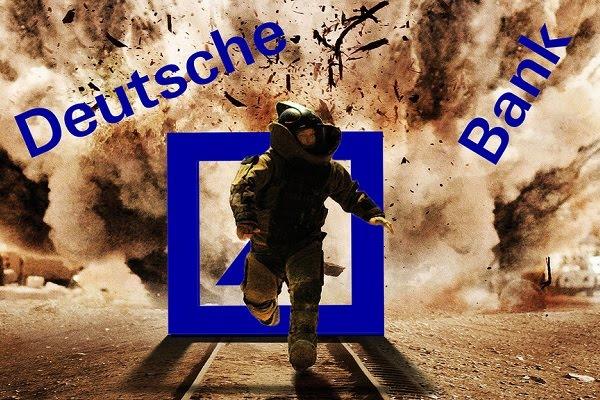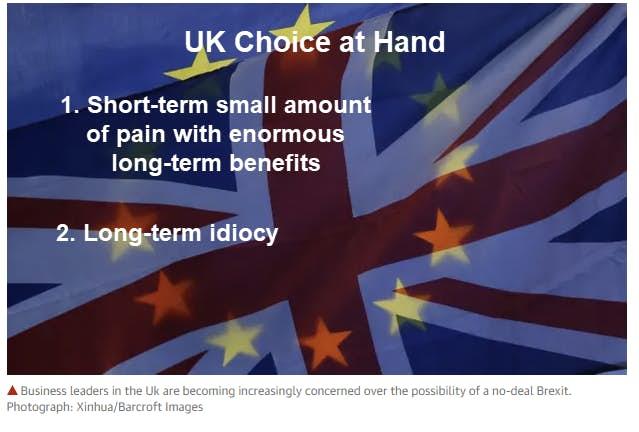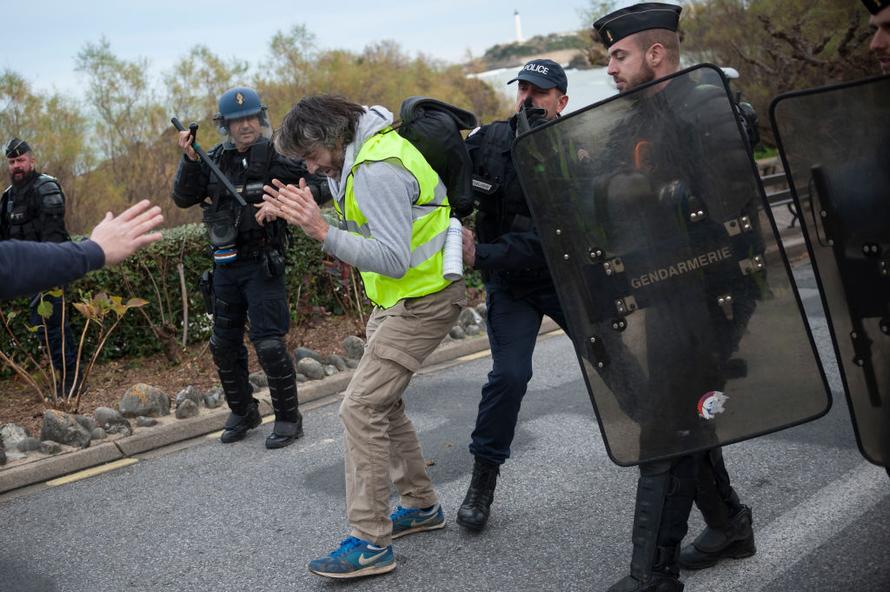Authored by Skip Kaltenhauser via DownWithTyranny.com,
Tick Tock. The good folks at the Bulletin of Atomic Scientistshave returned to wind their Doomsday Clock. Last Thursday at the National Press Club a group of well-credentialed speakers, including former California Governor Jerry Brown and former Secretary of Defense William Perry, underscored the organization’s warning that we have established residence in “the new abnormal.” Watch the press conference and supportive videos here.
The Doomsday Clock was set last year at a two-minutes until midnight, (midnight being the endgame), and there it now remains. There’s little comfort to be had in standing on what University of Chicago astrophysicist Robert Rosner characterized as a precipice we’d best quickly leap back from. Bulletin president and CEO Rachel Bronson stressed that the clock remaining where it is, the closest it has been to world catastrophe, is not stability, but “a stark warning to leaders and citizens around the world.”
William Perry said the organization views our current situation as precarious as it was in 1953, in the gloom of the Cold War while the Korean War still raged. Jerry Brown said, “The blindness and stupidity of the politicians and their consultants is truly shocking in the face of nuclear catastrophe and danger… the business of everyday politics blinds people to the risk, we’re playing Russian Roulette with humanity,” with the danger of an incident that will kill millions if not igniting a conflict that will kill billions.
Brown told journalists while they may love the Trump tweets and news of the day, “the leads that get the clicks,” the final click could be a nuclear accident, a mistake. “It’s hard to even feel or sense the peril and danger we are in, but these scientists know what they’re talking about, and I can say, based on my understanding of the political process, the politicians, for the most part, do not.” Referring to Congress’s inaction on related matters, Brown called it “massive sleep walking all over the place.” He committed to spending the next few years doing everything he can to “sound the alarm and get us back on the track to dialogue, collaboration and arms control.”
The Bulletin of Atomic Scientists and the Doomsday Clock are creations of a group of scientists who participated in the Manhattan Project. The clock’s current position was determined by a group of scholars and scientists that includes fifteen Nobel Laureates. These are serious people. It is heartening to see their avoidance of political talking points or partisan tilt in favor of Joe Friday’s focus on “just the facts, ma’am.” Just the chilling facts that let the chips fall where they may. About thirty-three minutes into the conference Jerry Brown gave a Dutch uncle talk to Democrats who maintain the attack mode on Putin on all matters without holding open the option for nuclear dialogue. It brought to mind the discussions of Washington’s bipartisan War Party prompted by William Atkin’s recent critique of NBC and MSNBC.
The Bulletin has been criticized for going beyond the original nuclear realm to include a number of other perils. But it seems if there is one thing we’re learning now from climate and polar ice studies and being slapped around by extreme weather events, it’s that seemingly unrelated factors cascade and overlap, interacting and accelerating in ways we hadn’t understood. No doubt more surprises will come. Certainly the impacts of climate change on food and water supplies, on ocean health and on migration will bear on political systems and on future tensions and conflicts. Perhaps it is too far afield, but a case could be made to include prospects of financial meltdowns from bankers behaving badly. Economic calamities have lit a lot of fuses throughout history.
Stanford cyber expert Herb Lin focused on the ongoing debasement of institutions that hold leaders accountable. While nuclear risks and climate change lead the concerns, that witches brew is now put into the blender by the misinformation on steroids enabled by the Internet. Says Lin, “Events in 2018 have helped us to better understand an ongoing and intentional corruption of the information environment. Our leaders complain about fake news and invoke alternative facts when reality is inconvenient. They are shamelessly inconsistent.”
So we have Information warfare combining with information overload to compromise the public’s ability to absorb and analyze critical issues. Among other things, information warfare delegitimizes the values and truths embodied by science, causing a cheapening and distrust of all information, opening a Pandora’s Box of distortions that allow the public and politicians to avoid grappling with the serious issues before them.
Fine by me if the experiences of the past few years inoculate the public with a healthy cynicism, offering some protection from the gatling guns spewing talking points. But if the public discards the legitimacy of scientific thought and proof, not so good.
Here’s a few excerpts from The Bulletin statement on the Doomsday Clock:
Humanity now faces two simultaneous existential threats, either of which would be cause for extreme concern and immediate attention. These major threats– nuclear weapons and climate change– were exacerbated this past year by the increased use of information warfare to undermine democracy around the world, amplifying risk from these and other threats and putting the future of civilization in extraordinary danger.
In the nuclear realm, the United States abandoned the Iran nuclear deal and announced it would withdraw from the Intermediate-range Nuclear Forces Treaty (INF), grave steps towards a complete dismantlement of the global arms control process. Although the United States and North Korea moved away from the bellicose rhetoric of 2017, the urgent North Korean nuclear dilemma remains unresolved. Meanwhile, the world’s nuclear nations proceeded with programs of “nuclear modernization” that are all but indistinguishable from a worldwide arms race, and the military doctrines of Russia and the United States have increasingly eroded the long-held taboo against the use of nuclear weapons.
On the climate change front, global carbon dioxide emissions– which seemed to plateau earlier this decade– resumed an upward climb in 2017 and 2018. To halt the worst effects of climate change, the countries of the world must cut net worldwide carbon dioxide emissions to zero by well before the end of the century. By such a measure, the world community failed dismally last year. At the same time, the main global accord on addressing climate change– the 2015 Paris agreement– has become increasingly beleaguered.The United States announced it will withdraw from that pact, and at the December climate summit in Poland, the United States allied itself with Russia, Saudi Arabia, and Kuwait (all major petroleum-producing countries) to undercut an expert report on climate change impacts that the Paris climate conference had itself commissioned.
Amid these unfortunate nuclear and climate developments, there was a rise during the last year in the intentional corruption of the information ecosystem on which modern civilization depends. In many forums, including particularly social media, nationalist leaders and their surrogates lied shamelessly, insisting that their lies were truth, and the truth “fake news.” These intentional attempts to distort reality exaggerate social divisions, undermine trust in science, and diminish confidence in elections and democratic institutions. Because these distortions attack the rational discourse required for solving the complex problems facing humanity, cyber-enabled information warfare aggravates other major global dangers– including those posed by nuclear weapons and climate change– as it undermines civilization generally.

First clock, 1947
Worrisome nuclear trends continue.
The global nuclear order has been deteriorating for many years, and 2018 was no exception to this trend. Relations between the United States and both Russia and China have grown more fraught. The architecture of nuclear arms control built up over half a century continues to decay, while the process of negotiating reductions in nuclear weapons and fissile material stockpiles is moribund. The nuclear-armed states remain committed to their arsenals, are determined to modernize their capabilities, and have increasingly espoused doctrines that envision nuclear use. Brash leaders, intense diplomatic disputes, and regional instabilities combine to create an international context in which nuclear dangers are all too real.
A number of negative developments colored the nuclear story in 2018.
First, the United States abandoned the Joint Comprehensive Plan of Action, the multilateral agreement that imposed unprecedented constraints on Iran’s nuclear program and allowed unprecedented verification of Iran’s nuclear facilities and activities. On May 8, President Trump announced that the United States would cease to observe the agreement and would instead launch a campaign of “maximum pressure” against Iran. So far, Iran and the other parties have continued to comply with the agreement, despite the absence of US participation. It is unclear whether they will keep the agreement alive, but one thing is certain: The Trump administration has launched an assault on one of the major nuclear nonproliferation successes of recent years and done so in a way that increases the likelihood of conflict with Iran and further heightens tensions with long-term allies.
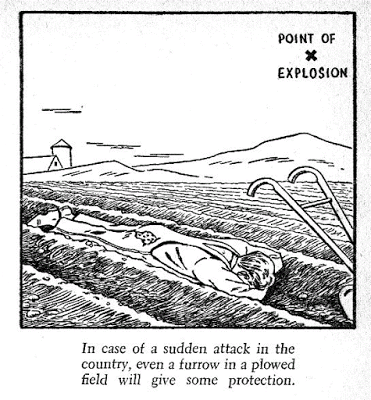
Second, in October the Trump administration announced that it intends to withdraw from the INF Treaty, which bans missiles of intermediate range. Though bedeviled by reciprocal complaints about compliance, the INF agreement has been in force for more than 30 years and has contributed to stability in Europe. Its potential death foreshadows a new competition to deploy weapons long banned. Unfortunately, while treaties are being eliminated, there is no process in place that will create a new regime of negotiated constraints on nuclear behavior. For the first time since the 1980s, it appears the world is headed into an unregulated nuclear environment– an outcome that could reproduce the intense arms racing that was the hallmark of the early, unregulated decades of the nuclear age.

…even as arms control efforts wane, modernization of nuclear forces around the world continues apace. In his Presidential Address to the Federal Assembly on March 1, Russian President Vladimir Putin described an extensive nuclear modernization program, justified as a response to US missile defense efforts. The Trump administration has added to the enormously expensive comprehensive nuclear modernization program it inherited from the Obama administration.
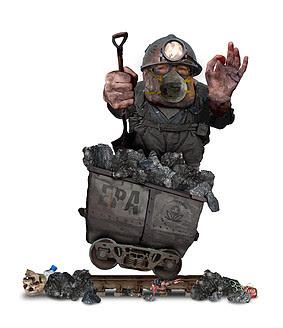
Andrew Wheeler by Nancy Ohanian
Ominous climate change trends.
The existential threat from human-caused global warming is ominous and getting worse. Every year that human activities continue to add carbon dioxide to the atmosphere irreversibly ratchets up the future level of human suffering and ecosystem destruction that will be wrought by global climate disruption. The key measure of improvement on the climate front is the extent of progress toward bringing global net carbon dioxide emissions to zero. On this measure, the countries of the world have failed dismally.
Global carbon dioxide emissions rates had been rising exponentially until 2012 but ceased growing from 2013 to 2016. Even if this emissions plateau had continued, it would not have halted the growth of warming. Net emissions need to ultimately be brought to zero to do so, given the persistence of carbon dioxide in the atmosphere for up to thousands of years. The ominous news from 2017 and 2018 is that world emissions appear to have resumed their upward climb.
Even nations that have strongly supported the need to decarbonize are not doing enough. Preliminary estimates show that almost all countries contributed to the rise in emissions. Some countries, including the United States and some members of the EU, increased their emissions after years of making progress in reducing them.
The United States has also abandoned its responsibilities to lead the world decarbonization effort. The United States has more resources than poorer nations have; its failure to ambitiously reduce emissions represents an act of gross negligence. The United States stood alone while the other G20 countries signed on to a portion of a joint statement reaffirming their commitment to tackle climate change. Then in 2018, at the United Nations Climate Change Conference in Poland, the United States joined with Russia, Saudi Arabia, and Kuwait– all major oil producers– to undercut a report on the impacts of climate change.

Freedom of the Press, Money and the Media by Nancy Ohanian
The threat of information warfare and other disruptive technologies.
Nuclear war and climate change threaten the physical infrastructure that provides the food, energy, and other necessities required for human life. But to thrive, prosper, and advance, people also need reliable information about their world– factual information, in abundance.
Today, however, chaos reigns in much of the information ecosystem on which modern civilization depends. In many forums for political and societal discourse, we now see national leaders shouting about fake news, by which they mean information they do not like. These same leaders lie shamelessly, calling their lies truth. Acting across national boundaries, these leaders and their surrogates exacerbate existing divisions, creating rage and increasing distrust in public and private institutions. Using unsupported anecdotes and sketchy rhetoric, denialists raise fear and doubt regarding well-established science about climate change and other urgent issues. Established institutions of the government, journalism, and education– institutions that have traditionally provided stability– are under attack precisely because they have provided stability.
In this environment, communication inflames passions rather than informing reason.
Many countries have long employed propaganda and lies– otherwise known as information warfare– to advance their interests. But a quantitative change of sufficient magnitude qualifies as a qualitative change. In the Internet age, the volume and velocity of information has increased by orders of magnitude. Modern information technology and social media allow users easy connectivity and high degrees of anonymity across national borders. This widespread, inexpensive access to worldwide audiences has allowed practitioners of information warfare to broadcast false and manipulative messages to large populations at low cost, and at the same time to tailor political messages to narrow interest groups.
By manipulating the natural cognitive predispositions of human beings, information warriors can exacerbate prejudices, biases, and ideological differences. They can invoke “alternative facts” to advance political positions based on outright falsehoods. Rather than a cyber Armageddon that causes financial meltdown or nationwide electrical blackouts, this is the more insidious use of cyber tools to target and exploit human insecurities and vulnerabilities, eroding the trust and cohesion on which civilized societies rely.
The Enlightenment sought to establish reason as the foundational pillar of civilized discourse. In this conception, logical argument matters, and the truth of a statement is tested by examination of values, assumptions, and facts, not by how many people believe it. Cyber-enabled information warfare threatens to replace these pillars of logic and truth with fantasy and rage. If unchecked, such distortion will undermine the world’s ability to acknowledge and address the urgent threats posed by nuclear weapons and climate change and will increase the potential for an end to civilization as we know it. The international community should begin multilateral discussions that aim to discourage cyber-enabled information warfare and to buttress institutions dedicated to rational, fact- based discourse and governance.
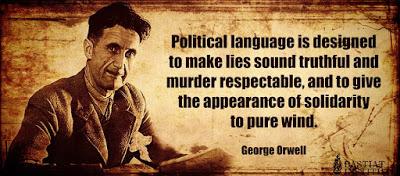
Particularly regarding the 2016 election, Russia and fake news have become inseparable to many.
My lingering view remains that any impact from Internet mischief the Russians did during elections was a blip next to all the rot that’s been flying about for years, much of it funded by homegrown dark money and most of it owing to good old-fashioned American lack of integrity. On the other hand, I don’t have a cell phone, am not on cable and have never been on Facebook, so maybe I’m just clueless about how easily people are significantly swayed by a select few of the gazillion bits of information firehosing them, even those bits that people happily cobble into personal echo-chambers. But it seems that folks who are birthers and such don’t have to depend on the far flung for nonsense readily available and riding down a hotel escalator. The American realm of carefully calculated election misinformation from incognito sources is wonderfully underscored by the POV film Dark Money. It shows how dark money, ramped up by Citizens United, distorted elections in Montana, targeting both Democrats and Republicans who didn’t do a sufficient kowtow to the big money. Not to Putin’s druthers, but to the big money, to polluters, Koch brothers allies, ALEC objectives and such. But I digress, because that’s the beauty of a blog post.
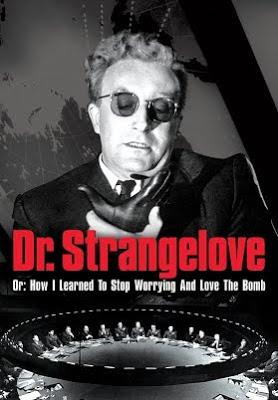
Back to bombs.
According to the Federation of American Scientists, nine nations together have about 15,000 nuclear bombs, most far more powerful than those used on Japan, 1,800 of those possessed by the US and Russia are kept on high-alert status. Ride along with Major Kong here, and sing along with Vera Lynn here on “We’ll Meet Again,” as humanity exits stage left. Here’s a version picking some of the 331 atmospheric tests the US conducted from 1945 to 1962. Try the comfort of the largest bomb exploded, the Tsar Bomba, aka Ivan, aka Vanya, here. If you’d like to explore the impacts of a single one megaton bomb, (eighty times larger than the Hiroshima bomb but tiny compared to some modern bombs), as well as the global impacts of an exchange of 100 Hiroshima-sized bombs, perhaps a conflict between Pakistan and India,here you go. Perhaps pass these along to George W. Bush so he has a better idea of how to look for a WMD, maybe at a correspondents dinner.
By the way, do you think kids in the Fifties might have had a few issues to work out later?
Actions and statements by Trump figure significantly in the clock’s advancement in 2017 to two and a half minutes before midnight. A then-incoming President Trump made alarming statements regarding nuclear proliferation, the prospect of using nuclear weapons and his opposition to US commitments on climate change. And in 2018 he helped move the clock ahead thirty seconds with actions like pulling out of the Iran agreement. By the way, that idiocy is greased by nuclear power Israel, Sheldon Adelson and their American neocon minions like John Bolton. Invading Iraq wasn’t enough horror.
Trump also announced his intent to scrap the Intermediate-Range Nuclear Forces Treaty (INF) that for decades was a lynchpin for global arms control.
I do wish Trump luck for a good follow-through with North Korea that might relax the minute hand a bit. The world needs a win.
Trump recently reincarnated the illusion of a global defense system. A worthy critique by Joe Cirincione, president of the Ploughshares Fund, is his essay Donald Trump’s Mission Impossible: Making His Unrealistic Missile Plan Work, is here.
That man behind the curtain has nothing on Trump. Now we have the news of Trump’s latest misdirection, Venezuela. In 1975 I traveled overland to South America. Two impressions of Venezuela linger, the startling transition over a few hours going from snow in the Andes to the streamy tropics below, and the surreal feel while waterskiing between the oil derricks in Lake Maracaibo. Like slicks on the water, oil money was everywhere, a pleasant-looking lifestyle for many of the privileged youths darting about in convertibles filled with cheap gas. I can’t grasp the changes since then. Whatever way out of the miseries of a failed state might be found, it’s hard to imagine lighting the fuse for a civil war would prove beneficial. Perhaps Venezuelans will come knocking seeking asylum, quoting Trump’s description of their plight, never mind contributing US pressures. In any case, Venezuela should give us pause at how fast things can change.
Tick Tock.

via ZeroHedge News http://bit.ly/2S3S9FA Tyler Durden
 Mohammed bin Salman had been crown prince of Saudi Arabia for only a few months, but he was already on his second U.S. visit. In March 2018, the young monarch (usually known as “MBS”) spent three weeks on a whirlwind P.R. tour of America, meeting everyone from Jeff Bezos to Morgan Freeman.
Mohammed bin Salman had been crown prince of Saudi Arabia for only a few months, but he was already on his second U.S. visit. In March 2018, the young monarch (usually known as “MBS”) spent three weeks on a whirlwind P.R. tour of America, meeting everyone from Jeff Bezos to Morgan Freeman.
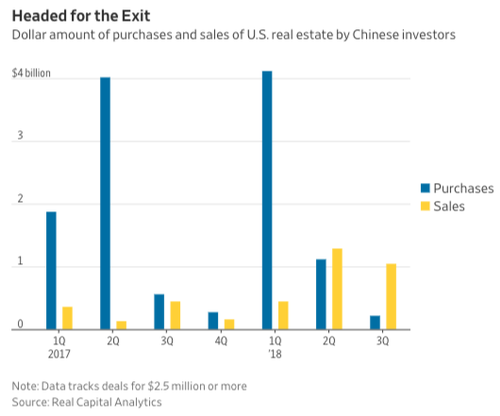
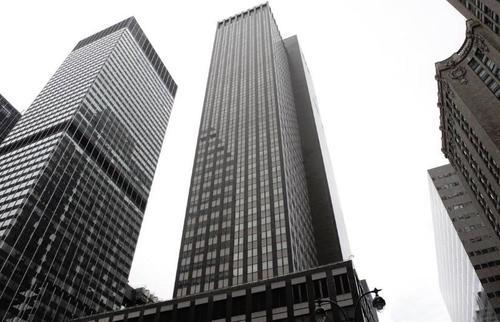
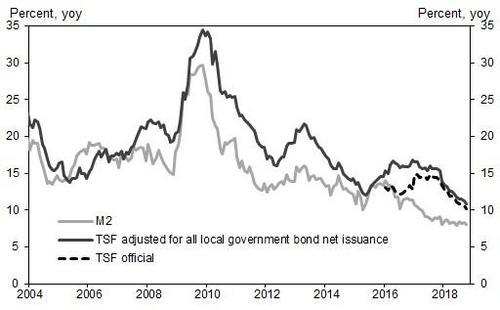
 Clint Bolick, a co-founder of the Institute for Justice, was for years one of the libertarian movement’s most successful trial lawyers. In 2002, his advocacy for school choice culminated in the U.S. Supreme Court’s ruling in Zelman v. Simmons-Harris, in which Cleveland’s pioneering school voucher program was upheld. Three years later, he argued and won Granholm v. Heald, in which the Court struck down protectionist state laws that banned the direct sale of wine to consumers from out-of-state wineries.
Clint Bolick, a co-founder of the Institute for Justice, was for years one of the libertarian movement’s most successful trial lawyers. In 2002, his advocacy for school choice culminated in the U.S. Supreme Court’s ruling in Zelman v. Simmons-Harris, in which Cleveland’s pioneering school voucher program was upheld. Three years later, he argued and won Granholm v. Heald, in which the Court struck down protectionist state laws that banned the direct sale of wine to consumers from out-of-state wineries.